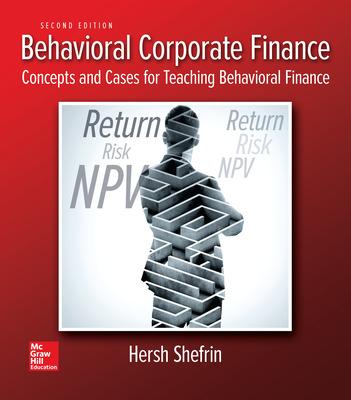1. Describe the most important factors that impeded the Packard Foundation from diversifying, but not the Hewlett...
Question:
1. Describe the most important factors that impeded the Packard Foundation from diversifying, but not the Hewlett Foundation.
2. With five family members and the former CEO of HP comprising half the Packard Foundation board, was the Packard board largely a homogenous group or a heterogeneous group?
3. Did the composition of the Packard Foundation finance committee predispose it to groupthink?
4. George Vera, CFO of the Packard Foundation, was quoted as saying: “This is a family foundation. The family makes these kinds of decisions, and the board is comfortable with this as a starting point.” Place his statement into the context of the general discussion.
5. Was there an endowment effect at work at the Packard Foundation?
6. Was there an endowment effect at work at the Hewlett Foundation?
The families who founded the firm Hewlett-Packard also created two foundations, the Hewlett Foundation and the Packard Foundation. Both foundations are institutional in- vestors that fund charitable projects from their portfolios. According to the capital asset pricing model (CAPM), investors are only rewarded for holding market risk, not firm-specific risk that they can diversify away. Yet for years more than 90 percent of the Packard Foundation’s portfolio consisted of a single stock, the stock of Hewlett-
Packard. In contrast, the Hewlett Foundation had made the decision to hold a more diversified portfolio.
One cost of failing to diversify is excess volatility. Exhibit 13-9 displays the market value of Hewlett-Packard together with Agilent Technologies, the firm Hewlett- Packard spun out in 1999. The Packard Foundation contin- ued to hold the shares of Agilent Technologies it received from the spinoff. The fortunes of the Packard Foundation ebbed and flowed in accordance with Exhibit 13-9.
The Packard Foundation reported assets of about $2.4 billion in 1995 and $7.4 billion in 1996. By year-end 1999 its endowment was worth $13.1 billion, placing it among the 10 largest foundations in the United States. In mid-2000, its endowment was $18 billion and it was the second largest foundation in the United States.
However, the value of the Packard Foundation endowment fell to $9.8 billion in 2000, to $6.2 billion in 2001, and to $3.5 billion during the autumn of 2002, just after the merger of Hewlett-Packard and Compaq Com- puter Corporation. At year-end 2003, the foundation’s endowment was worth $4.7 billion.
In contrast, the Hewlett Foundation held about 20 percent of its endowment in Hewlett-Packard stock. At year-end 2002, its endowment stood at $4.5 billion. Be- tween 2000 and 2002 its endowment experienced far less volatility than did the Packard Foundation endowment.
The cost of the volatility to the Packard Foundation endowment was borne by the recipients of its grants and the foundation itself. The foundation had been generous in its support of environmental conservation, science, children’s issues, and reproductive health and popu- lation. As the value of its endowment plummeted, the foundation reduced its grants from $451 million in 2001 to a planned $200 million in 2003. It reduced its staff by 40 percent.
In 2002, the Packard Foundation board consisted of 12 directors. Of the 12, five were members of the Packard family. Nonfamily members included Lewis Platt, the former CEO of Hewlett-Packard; William Reilly, the former head of the Environmental Protection Agency; and Richard Schlosberg, the president of the foundation.
The Packard Foundation had no separate investment committee. Rather, it had a finance committee that made decisions about both its portfolio and the grants it would provide. In 2000 the finance committee was composed of the following five members:
• Lewis Platt, mentioned earlier, who chaired the com- mittee.
• Susan Packard Orr, daughter of David and Lucille Packard.
• William Reilly, mentioned earlier.
• Dean Morton, former chief operating ....
The Capital Asset Pricing Model (CAPM) describes the relationship between systematic risk and expected return for assets, particularly stocks. The CAPM is a model for pricing an individual security or portfolio. For individual securities, we make use of the security market line (SML) and its... Portfolio
A portfolio is a grouping of financial assets such as stocks, bonds, commodities, currencies and cash equivalents, as well as their fund counterparts, including mutual, exchange-traded and closed funds. A portfolio can also consist of non-publicly...
Step by Step Answer:

Behavioral Corporate Finance Concepts And Cases For Teaching Behavioral Finance
ISBN: 9781259277207
2nd Edition
Authors: Hersh Shefrin





